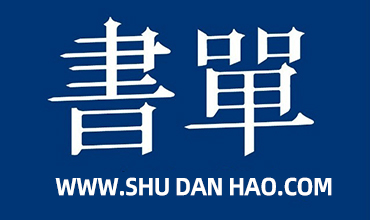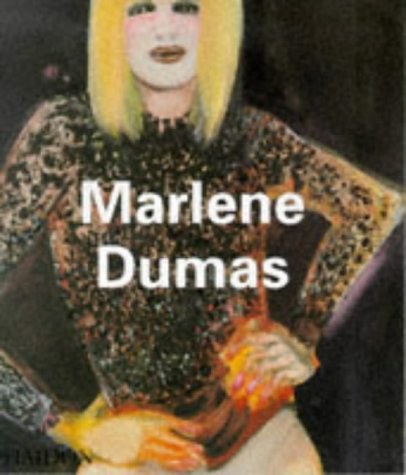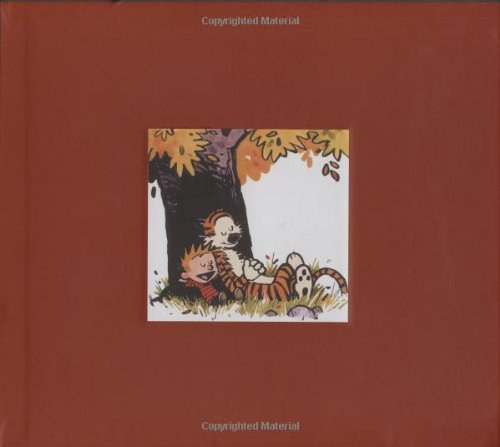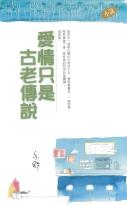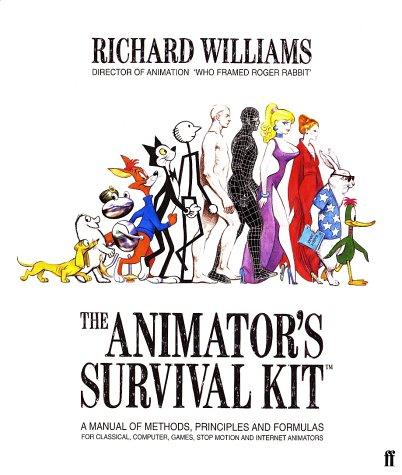
西藏七百年(上下):英文
书刊介绍
西藏七百年(上下):英文 内容简介
《西藏七百年(英文版)》介绍:When China entered the period of the Yuan Dynasty (1271-1368), Tubo pledged allegiance to the Central Government and the region became a part of China. Soon after the Ming Dynasty (1368-1644) replaced the Yuan Dynasty in 1368, all the representative figures in Tibet received official titles from the Ming court. When the Qing Dynasty (1644-1911) replaced the Ming to rule the whole of China, including Tibet, the 5th Dalai Lama was summoned to Beijing for an audience with Emperor Shunzhi in 1625 and received his official title from the Qing court the following year. When the Republic of China (1912-1949) was founded, the Provisional Constitution of the Republic of China,enacted under the auspices of Dr. Sun Yat-sen, Interim President, stipulated that Tibet was one of the 22 provinces of the Republic of China. When the People's Republic of China was founded on October 1, 1949, the Central Government and the local government of Tibet signed the Agreement on Measures for the Peaceful Liberation of Tibet in Beijing on May 23, 1951. Tibet won peaceful liberation in accordance with the agreement.
西藏七百年(上下):英文 本书特色
《西藏七百年(英文版)》由五洲传播出版社出版。
西藏七百年(上下):英文 目录
CHAPTER ⅠYUAN DYNASTY RULE OF AND MANAGEMENT OVER TIBET(1271-1368) 1
How Did the Yuan Central Government Manage Tibet? 1
Yuan Dynasty Rule Over Tubo 5
Xuanzheng Council - Yuan Dynasty Rule Over Tubo 9
An Outline of the Yuan Dynasty Imperial Tutor System 14
Yuan Military and Government Bodies Established in Tibetan-Inhabited Areas 24
Yuan Dynasty Administrative Systems: The Thirteen 10,000-Household Offices in U-Tsang 32
Post Stations in Tubo During the Yuan Dynasty 45
On Subsidies the Yuan Dynasty Gave to the Tibetan-Inhabited Areas 48
CHAPTER Ⅱ
THE MANAGEMENT OF THE MING DYNASTY OVER TIBET(1368-1644) 56
A Brief Account of the Management of the Ming Dynasty over Tibet 56
Relations Between the Ming Dynasty and the Local Pagmo Zhupa Regime of Tibet 69
CHAPTER Ⅲ
THE LEGALIZATION OF THE ADMINISTERIAL POLICIES
FOR TIBET DURING THE EARLY PERIOD OF THE QING DYNASTY(1644-1840) 78
The Administerial Policies for Tibet During the Early Period of the Qing Dynasty 78
Historical Review of Political Status and Authority of Service of the High Commissioner 106
Historical Significance of the Qing Dynasty's System of Drawing Lots from a Golden Urn 127
Promulgation of the 29-Article Ordinance for More Effective Governing of Tibet and Unity of the Motherland 132
Legal Status of the 29-Article Ordinance for More Effective Governing of Tibet 147
CHAPTER Ⅳ
THE LATER PERIOD OF THE O.[NG DYNASTY (1841-1911) 163
Ⅰ. Qing Court Moves to Consolidate Tibetan Affairs in the Post-Opium War Period 163
On Issues Related to High Commissioner Qi Shan's Alteration of the Rules Regarding Tibetan Affairs 163
Ⅱ. Tibetan War of Resistance Against British Aggression and Sino-British Treaties Related to Tibet 171
First British Invasion 171
Tibetan People's First War of Resistance Against the British Invaders 180
Second British Invasion 197
Tibetan People's Second War of Resistance Against the British Invaders 209
Treaties between China and Britain on Tibet 227
Ⅲ. Effort to Handle Tibetan Affairs and Organize New Tibetan Government in the Late Qing Dynasty 242
New Bodies Set Up in Tibet During the Late Period of the Qing Dynasty and Their Activities 253
CHAPTER Ⅴ
CENTRAL GOVERNMENT MANAGEMENT OVER TIBET DURING THE PERIOD OF THE REPUBLIC OF CHINA (1912-1949) 265
Policies of the Central Government for Tibet During the Period of the Republic of China 265
Commission for Mongolian and Tibetan Affairs 329
Review of Measures Adopted by the Government of the Republic of China in 1912 to Plan and Manage Tibet 336
The Simla Convention on Which the United Kingdom Conspired to Separate Tibet from China and the Illegal McMahon Line 343
Measures for Safeguarding the Exercise of Sovereignty of Tibet during the Period of the Nationalist Government 358
Relationship between the 132 Dalai Lama and the Central Government During the Republic of China 383
Wu Zhongxin Goes to Tibet to Preside over the 142 Dalai Lamas Sitting-in-Bed Ceremony 388
Discovery of the 10th Panchen Lama and His Sitting-in-Bed Ceremony 394
British Support for "Tibetan Independence" Campaign 396
Truth About the "Tibetan Delegation" Attending the Asian Relations Convention 410
Living Buddha Razheng Murdered 416
CHAPTER Ⅵ
PEACEFUL LIBERATION OF TIBET IN 1951 AFTER THE FOUNDATION OF THE PRC 462
Historical Research on the Peaceful Liberation of Tibet 462
"It Is Better to March into Tibet as Soon as Possible"-The Wise Policy of Chairman Mao on Liberating Tibet 492
Marching Into Tibet and Opening the Door to Peace Talks 494
The Agreement Between the Central People's Government and the Local Government of Tibet on Measures for the Peaceful Liberation of Tibet 503
Peacefully Marching Into Lhasa 508
Zhang Jingwu Sent to Tibet as Central Government Representative%
西藏七百年(上下):英文 节选
In 1251, Sapan and Godan both died in Liangzhou. After Sapan's death,his nephew Pagba was still learning scripture in the Huanhua Monastery in Liangzhou. At that time, there was a fierce internal power struggle among the leading members of the Mongol ruling class, and at last Monge ascended the throne as the Khan in this year. In 1252, Kublai Khan received orders from Monge to lead a military expedition to Dali.
In about 1253, when Kuhlai Khan was garrisoning his army in Liupanshan,Pagba as well as Mongodo, the son of Godan, met with Kublai Khan. Kublai Khan presented Mongodo with 100 Mongol cavalrymen and asked Pagba to stay. This was the first meeting of Pagba and Kublai Khan. Pagba would later become the most respected and honoured Buddhist monk in China.
Kublai Khan had a good opinion of this modest and well-mannered young monk, and was impressed with his profound knowledge. Kublai Khan asked Pagba about the history of Tibet, and Pagba related the deeds of Songtsam Gambo, Trisum Detsan and other tsampos (kings) of the Tubo Kingdom. After listening to Kublai Khan who ordered people to consult the Chinese historical books. These books confirmed the veracity of what Pagba had related. Thus,Kublai Khan gained an even more favorable impression of Pagba. The History of the Yuan Dynasty reads "Pagba could recite hundreds of thousands of lines at the age of 7."
Although there may be some exaggeration here, there can be no doubt that Pagba was wise and intelligent, diligent and scholarly. He was taught by his uncle Sapan. Sapan was famed as a wise man who had profound knowledge and was most accomplished in the"Pancavidya (Five Studies)", and had made great achievements in Buddhism and history during his youth. As a result it was entirely reasonable that Pagba should have won the special favor of Kublai Khan.
Mongol rulers of the day treated Buddhism and Taoism equally without discrimination, but there was plenty of enmity between the two religions. Each hurled accusations and threats at the other as they sought to gain Mongol preferential treatment. Then in 1258 Monge Khan gave orders that therepresentatives of Buddhism and Taoism were to be called together for a debate.
During this debate, Pagba demonstrated his profound knowledge and eloquence. Buddhism effectively won the debate. In 1260, when Kublai Khan ascended to the Khan throne, he immediately appointed Pagba the Imperial Tutor.
西藏七百年(上下):英文 节选
In 1251, Sapan and Godan both died in Liangzhou. After Sapan's death,his nephew Pagba was still learning scripture in the Huanhua Monastery in Liangzhou. At that time, there was a fierce internal power struggle among the leading members of the Mongol ruling class, and at last Monge ascended the throne as the Khan in this year. In 1252, Kublai Khan received orders from Monge to lead a military expedition to Dali.
In about 1253, when Kuhlai Khan was garrisoning his army in Liupanshan,Pagba as well as Mongodo, the son of Godan, met with Kublai Khan. Kublai Khan presented Mongodo with 100 Mongol cavalrymen and asked Pagba to stay. This was the first meeting of Pagba and Kublai Khan. Pagba would later become the most respected and honoured Buddhist monk in China.
Kublai Khan had a good opinion of this modest and well-mannered young monk, and was impressed with his profound knowledge. Kublai Khan asked Pagba about the history of Tibet, and Pagba related the deeds of Songtsam Gambo, Trisum Detsan and other tsampos (kings) of the Tubo Kingdom. After listening to Kublai Khan who ordered people to consult the Chinese historical books. These books confirmed the veracity of what Pagba had related. Thus,Kublai Khan gained an even more favorable impression of Pagba. The History of the Yuan Dynasty reads "Pagba could recite hundreds of thousands of lines at the age of 7."
Although there may be some exaggeration here, there can be no doubt that Pagba was wise and intelligent, diligent and scholarly. He was taught by his uncle Sapan. Sapan was famed as a wise man who had profound knowledge and was most accomplished in the"Pancavidya (Five Studies)", and had made great achievements in Buddhism and history during his youth. As a result it was entirely reasonable that Pagba should have won the special favor of Kublai Khan.
Mongol rulers of the day treated Buddhism and Taoism equally without discrimination, but there was plenty of enmity between the two religions. Each hurled accusations and threats at the other as they sought to gain Mongol preferential treatment. Then in 1258 Monge Khan gave orders that therepresentatives of Buddhism and Taoism were to be called together for a debate.
During this debate, Pagba demonstrated his profound knowledge and eloquence. Buddhism effectively won the debate. In 1260, when Kublai Khan ascended to the Khan throne, he immediately appointed Pagba the Imperial Tutor.
相关推荐
-
![[英] 菲欧娜·伟特《365个艺术创意》](http://oss.shudanhao.com/caiji/chazidian/2023/16578.jpg)
[英] 菲欧娜·伟特《365个艺术创意》
Usborne出版社知名儿童艺术创意书。目录 城堡!城堡(1-4)彩蛋舞会(5-12)蝴蝶花园(13-18)手指小人来啦(19-21)彩旗飘飘(
-

铁路运输安全管理-高等学校教材
铁路运输安全管理-高等学校教材 本书特色 本书从安全教育需要出发,对我国铁路运输安全规范化、制度化管理工作进行了系统阐述,主要内容有:运输安全及其保障系统、运输...
-

英语的一半是动词-赠送超长MP3光盘
英语的一半是动词-赠送超长MP3光盘 本书特色 《英语的一半是动词》,学好这些动词,你就能征服英语!韩国上市30天紧急再版,排名n0.1的终身五星级畅销书!《英...
-

图解宇宙科普-奇怪的气候科学
图解宇宙科普-奇怪的气候科学 本书特色茫茫宇宙,无穷无尽,蕴藏着多少巨大奥秘啊! 宇宙何时诞生的呢? 宇宙到底有多大呢?宇宙的尽头在哪里呢……阅读“ 图解科普世...
-

生物(初中分册)-概念公式定理解读手册
生物(初中分册)-概念公式定理解读手册 本书特色 本套工具书是依照新课程标准进行编写,突破了教材版本的局限。既遵循新课程标准的知识框架,又结合知识点本身的逻辑性...
-

哈克贝利.费恩历险记-内赠有声读本
哈克贝利.费恩历险记-内赠有声读本 本书特色 《哈克贝利·费恩历险记(精)》是马克·吐温一部重要的作品,故事的主人公是在《汤姆·索亚历险记》中就跟大家见面的哈克...
-

1984
1984 本书特色 《四季经典书屋:1984(插图注释全本)》创造出一个极权主义社会,借由个体的怀疑和探究,将那个社会的极端恐怖一点点展露在我们面前。这是部幻想...
-

欧洲民族服饰概论
欧洲民族服饰概论 本书特色 欧洲民族服饰是整个西方服饰文化发展和演变过程中的重要组成部分,也是服装专业教学中必要的基础理论知识。欧洲各地民族服饰风格的形成具有一...
-

平面设计全书(全彩)
《平面设计全书(全彩)》内容简介:本书分为两大部分。第一部分以理论为基础,并对Adobe Photoshop CC 2018、Adobe Illustrator...
-

市场营销策划(第三版)
《市场营销策划(第三版)》内容简介:本教材旨在培养学生对具体营销活动的策划操作能力,全面阐述了市场营销策划的基本原理,市场
-

小学儿童发展与教育心理学
小学儿童发展与教育心理学 本书特色 这是一本供高等师范院校小学教育专业使用的心理学教材。本书在体例上进行了如下安排。首先,在每章之初,对教与学提出了建议。教师可...
-

小学生易错易混字辨析手册
小学生易错易混字辨析手册 本书特色 新版购买请点击:http:\/\/product.dangdang.com\/product.aspx?product_id...
-

文人画事:从沈周到费丹旭
《文人画事:从沈周到费丹旭》内容简介:公众号当红的艺术科普作家,以艺术爱好者的身份用一种前所未有的形式向读者讲述六位艺术家
-

教室里学不到的科学(全4册)
教室里学不到的科学(全4册) 本书特色 ★ 16开平装,青岛出版社出版★ 不用老师讲、自己就能懂的趣味科学漫画书!★ 其中《小学生*好奇的人体书》是韩国校园图书...
-

加西亚.洛尔卡戏剧选
加西亚•洛尔卡(Garca Lorca,Federico,1898.6.5~1936.8.19),西班牙戏剧家,诗人,生于格拉纳达,大学毕业后从事戏剧和诗歌创作...
-

堂吉诃德-彩图珍藏版
堂吉诃德-彩图珍藏版 本书特色 著名长篇小说《堂吉诃德》是塞万提斯的代表作。小说全名为《奇情异想的绅士堂吉诃德德拉曼却》(原书共两卷)。《堂吉诃德》主要描写一个...
-

中国学生必读经典--昆虫记 本家书
中国学生必读经典--昆虫记本家书 本书特色 这是一本送给孩子的经典文学作品。部编教材推荐必读(中小学必读名著)。初中语文老师推荐阅读的名著。语言优美,专为中小学...
-

圣奥古斯丁忏悔录
圣奥古斯丁忏悔录 本书特色 在人类浩淼的书海里,关于“忏悔”方面的书,可以说寥寥无几,造成深远影响力的“忏悔录”则更是少之又少。而眼前这本由一个名字叫奥古斯丁的...
-

伊索寓言-名师精评版
伊索寓言-名师精评版 本书特色 《伊索寓言》是世界上*古老、*伟大的寓言集,是西方寓言的始祖,它的出现奠定了寓言作为一种文学体裁的基石,对后世有重要影响。该寓言...
-

象牙塔的变迁-学术卡里斯玛与研究性大学的起源
象牙塔的变迁-学术卡里斯玛与研究性大学的起源 本书特色 威廉·克拉克(williamclark),当代知名科学史专家,曾任教于英美德多所大学,包括剑桥大学、哥廷...

